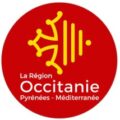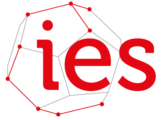Welcome to the nanoMIR website
NanoMIR is a world leader in III-Sb technology,i.e. the family of III-V compounds based on GaSb, InAs, AlSb, InSb, their alloys and their heterostructures. Its mission is to develop this technology and its applications.
The antimonides (III-Sbs) are III-V semiconductors with effective band gaps that are particularly well suited to the mid-infrared (mid-IR ~ 2–25 µm), a wavelength range that exhibits the transparency windows of the atmosphere as well as strong absorption lines from many molecules. The mid-IR is therefore very well suited to the development of a wide range of applications with important societal implications, such as gas analysis (pollution or process monitoring, physics of gases, of the atmosphere,…), medical applications (surgery, diagnosis,..), free space communications, but also security- and defense applications (countermeasures, detection of toxic or explosive species, night vision,…).
The nanoMIR (nanostructure-based quantum devices for the Mid-InfraRed) group is a research group of the “Institut d’Electronique et des Systèmes”, a laboratory of the University of Montpellier jointly operated by the CNRS (UMR 5214). The research is carried out by 11 permanent scientists and, typically, 20 PhD students or post-docs.
Three technical staff support the research efforts.
NanoMIR is or has been supported by a number of institutions such as the European Union (FP6, FP7, H2020, Horizon Europe programs), the French “Agence Nationale de la Recherche”, the French “Délégation Générale de l’Armement”, the Région Occitanie, …
NanoMIR has been awarded an EquipEx (project “EXTRA”, ANR-11-EQPX-0016) and an EquipEx+ (project “HYBAT”, ANR-21-ESRE-0026) by the French “Investments for the Future” and “France 2030” programs.










